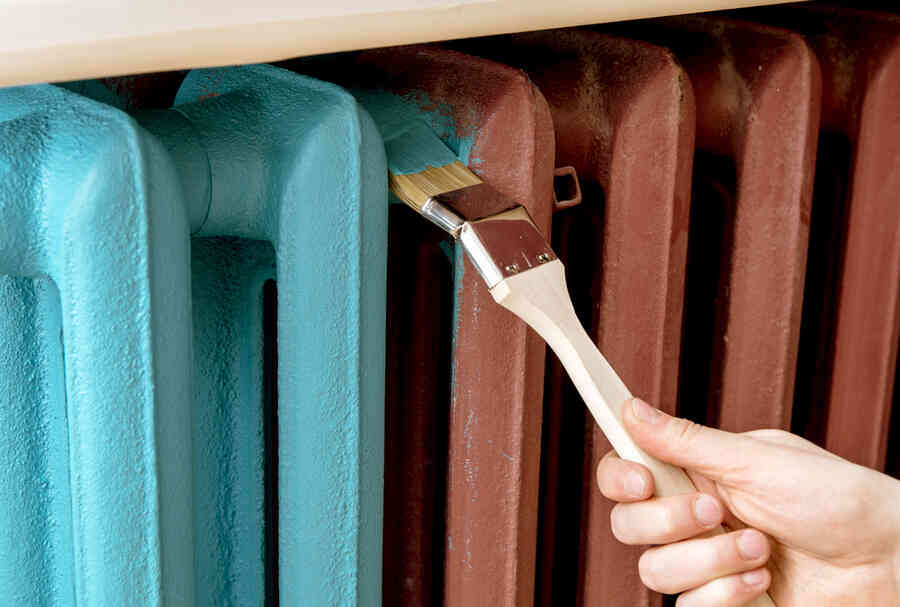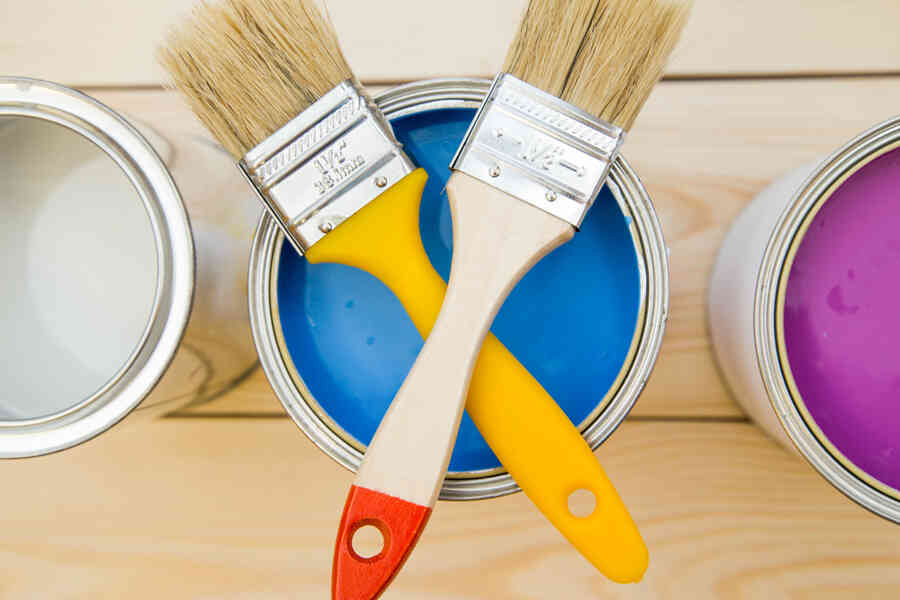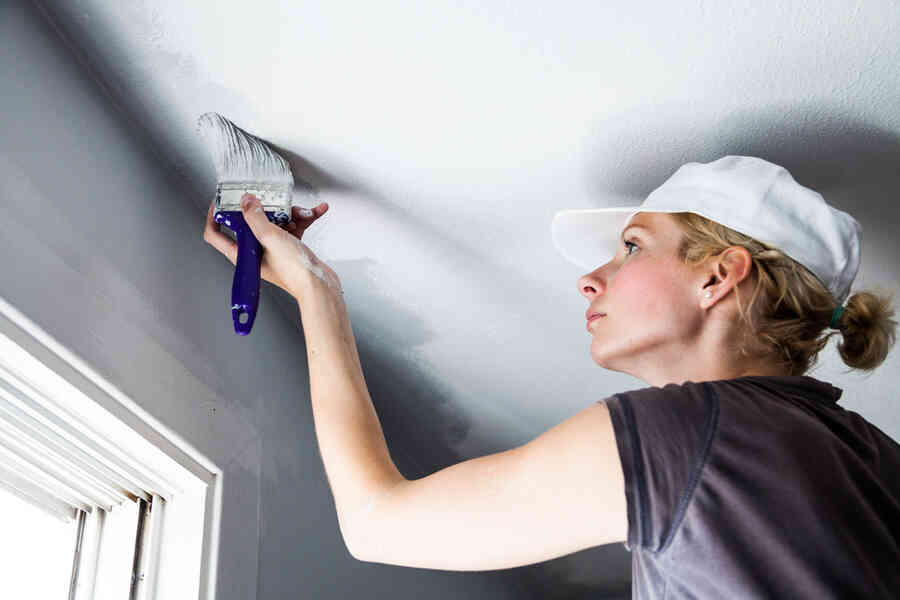Welcome to our guide on the best radiator paint for transforming your home with style and efficiency! Giving your radiators a fresh coat of paint not only adds a touch of personality to your space, but it can also enhance their performance and longevity.
Choosing the right radiator paint involves considering several factors. Firstly, you’ll want to select a paint colour and finish that complements your interior decor. It’s also crucial to opt for a heat-resistant paint to withstand the high temperatures radiators generate. Additionally, a paint with mould and mildew resistance properties will help maintain a cleaner and healthier environment.
As we dive into this article, we’ll explore different types of radiator paints available, such as standard water-based paints, heat-resistant options, metallic finishes, spray paints, and specialty options. We’ll also highlight the best radiator paints on the market, based on their quality, durability, and ease of application.
So, let’s roll up our sleeves and discover the perfect radiator paint to add a fresh coat of style and efficiency to your home!
Factors to Consider when Choosing Radiator Paint
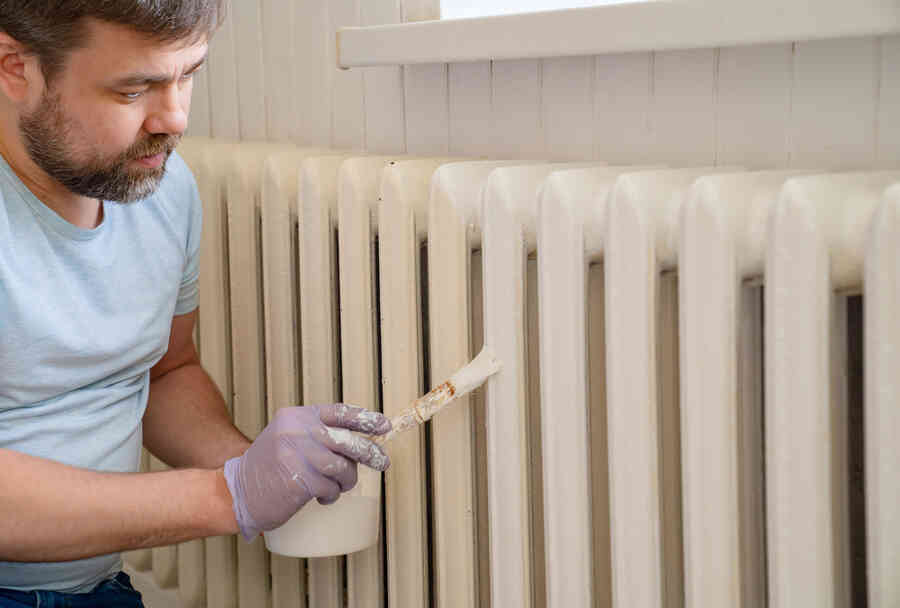
When it comes to choosing the best radiator paint for your home, there are several important factors to consider. The right paint can not only add a touch of style to your radiators but also enhance their efficiency and longevity. Here are some key factors to keep in mind:
Colour and Finish
The colour and finish of your radiator paint can greatly impact the overall aesthetic appeal of your room. Whether you prefer a classic white finish to blend seamlessly with your walls or a bold, statement colour to make your radiators stand out, the choice is yours. Just remember, lighter colours tend to reflect heat more efficiently, while darker colours can absorb and retain heat.
Heat Resistance
Radiators generate a significant amount of heat, so it is crucial to choose a paint that can withstand high temperatures. Heat-resistant radiator paints are specially formulated to resist yellowing, cracking, and peeling caused by heat exposure. Look for paints that are specifically labelled as heat-resistant or suitable for use on radiators.
Mould and Mildew Resistance
Bathrooms and other damp areas in your home may be prone to mould and mildew growth. To prevent these issues, opt for radiator paint that offers mould and mildew resistance. Such paints contain special additives that inhibit the growth of fungi and keep your radiators looking fresh and clean.
Durability
Your radiators are subjected to constant wear and tear, from accidental bumps to regular cleaning. Choosing a durable paint that can withstand these challenges is essential for maintaining a long-lasting finish. Look for paints that offer good scratch resistance and are easy to clean without compromising their appearance.
Ease of Application
Unless you’re a professional decorator, you’ll want a radiator paint that is easy to apply, even for DIY enthusiasts. Consider factors such as the paint’s consistency, drying time, and ease of coverage. Water-based radiator paints are often preferred for their user-friendly application and quick drying times.
Eco-Friendliness
If you’re conscious of the environment, choosing an eco-friendly radiator paint allows you to reduce your carbon footprint while still achieving the desired look. Look for paints with low VOC (volatile organic compounds) content, as these emit fewer harmful fumes during application. Check for eco-certifications such as the EU Ecolabel to ensure you are making an eco-conscious choice.
By taking these factors into consideration, you can select a radiator paint that not only enhances the appearance of your radiators but also meets your practical requirements. Remember, a well-painted radiator can bring both style and efficiency to your home!
Types of Radiator Paints
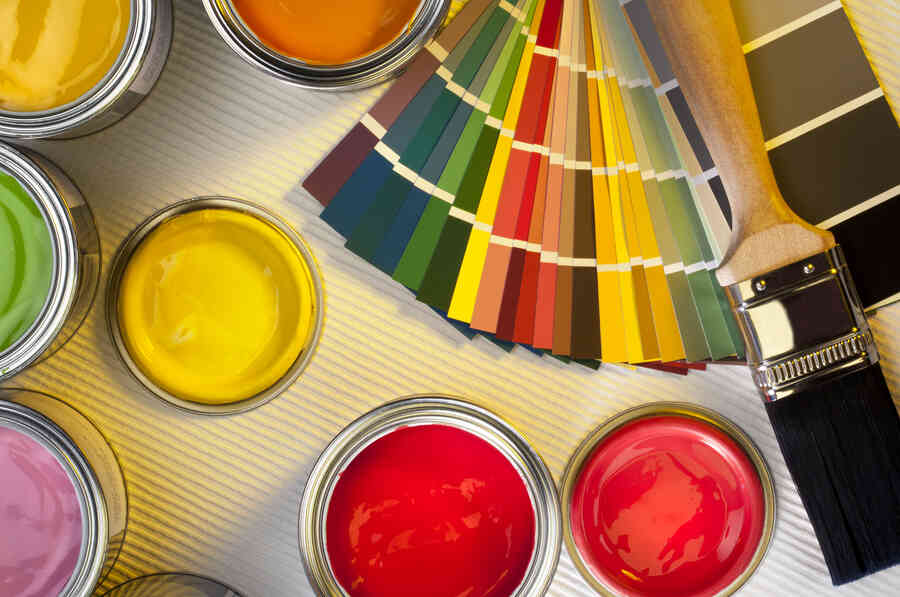
When it comes to choosing the right paint for your radiators, there are several types available in the market. Each type has its own unique characteristics and benefits. Here are some of the most popular types of radiator paints:
Standard Water-Based Radiator Paints
Standard water-based radiator paints are the go-to option for most households. They are easy to apply, quick-drying, and provide a smooth and even finish. These paints are formulated to withstand high temperatures and are specifically designed for use on radiators. They offer great adhesion and durability, making them a reliable choice.
Heat-Resistant Radiator Paints
If you have radiators that generate a lot of heat, such as those in hot water or steam heating systems, heat-resistant radiator paints are the ideal choice. These paints are specially formulated to withstand extreme temperatures and prevent any damage or discoloration. Heat-resistant paints typically have a higher heat tolerance compared to standard radiator paints, ensuring long-lasting protection and maintaining the beauty of your radiators.
Metallic Radiator Paints
If you want to add a touch of glamour and sophistication to your radiators, metallic radiator paints are an excellent option. These paints contain metallic pigments that create a shimmering effect on the surface of your radiators, giving them a stylish and luxurious look. Metallic radiator paints are available in various shades, such as silver, gold, bronze, and copper, allowing you to choose the perfect match for your interior decor.
Spray Paints for Radiators
If you prefer a convenient and hassle-free painting experience, spray paints for radiators are worth considering. These paints come in aerosol cans, allowing for easy and precise application. Spray paints provide an even coverage and smooth finish, eliminating brush marks or streaks. They are particularly useful for painting intricate or hard-to-reach areas of your radiators. However, it is essential to follow the manufacturer’s instructions carefully and ensure proper ventilation when using spray paints.
Specialty Finishes for Radiators
For those looking to make a bold statement or add an artistic flair to their radiators, specialty finishes offer a wide range of creative possibilities. From textured finishes like hammered or stippled effects to chalk paints that create a vintage or distressed look, these specialty finishes can transform your radiators into unique focal points in your home. Remember to choose a finish that complements your overall interior design aesthetic and adds character to your space.
It’s important to note that regardless of the type of radiator paint you choose, always prioritize quality and ensure it is specifically formulated for use on radiators. Using regular wall paint or low-quality paint can result in peeling, cracking, or discoloration due to the high temperatures that radiators can reach.
Now that we’ve explored the different types of radiator paints available, let’s move on to the next section and discover the best radiator paints on the market that combine both style and durability.
The Best Radiator Paints on the Market
When it comes to giving your radiators a fresh and attractive look, choosing the right paint is crucial. Not only does it add a touch of style to your home, but it also helps protect your radiators from corrosion and provides better heat conduction. To help you make an informed decision, we’ve compiled a list of the best radiator paints available in the UK market:
1. Farrow & Ball Estate Eggshell
Farrow & Ball is renowned for its high-quality paints, and their Estate Eggshell range is no exception. This paint offers a durable and long-lasting finish with a low sheen, perfect for radiators. It is available in a wide range of beautiful colours to suit every interior design scheme. The Estate Eggshell formulation also provides excellent coverage and is easy to apply.
2. Dulux Quick Dry Satinwood
Dulux Quick Dry Satinwood is a popular choice among homeowners. This paint provides a smooth, satin finish that is ideal for radiators. It has a quick-drying formula, allowing you to complete the painting project in no time. With its excellent durability and washability, this paint will keep your radiators looking fresh for years to come.
3. Craig & Rose Artisan Metallic Effect
If you want to add a touch of glamour to your radiators, Craig & Rose Artisan Metallic Effect paint is the way to go. This range offers stunning metallic finishes that create a luxurious and contemporary look. With options like gold, silver, and copper, you can easily transform your radiators into eye-catching features in your home.
4. Rust-Oleum Heat Resistant Paint
For radiators that are exposed to high temperatures, such as those in kitchens or near fireplaces, Rust-Oleum Heat Resistant Paint is an excellent choice. This paint is specially formulated to withstand temperatures up to 600°C, making it ideal for radiators in heat-intensive areas. It also provides a durable and corrosion-resistant finish.
5. Hammerite Radiator Enamel Spray Paint
If you prefer the convenience of a spray paint, Hammerite Radiator Enamel Spray Paint is a fantastic option. This paint is designed specifically for radiators and offers a smooth and even finish. It is heat resistant and provides excellent durability. The spray application makes it easy to cover intricate radiator designs and hard-to-reach areas.
6. Annie Sloan Chalk Paint
If you’re a fan of the shabby chic or vintage look, Annie Sloan Chalk Paint is perfect for your radiators. This paint has a unique chalky finish that adds character and charm to any room. It is easy to apply and dries quickly, allowing you to achieve that desired rustic appearance. With a range of beautiful colours available, you can create a truly bespoke look for your radiators.
Remember, when selecting a radiator paint, always consider factors such as heat resistance, durability, and ease of application. Additionally, make sure to prepare the surface properly before painting to ensure the best results.
Step-by-Step Guide: How to Paint Your Radiators
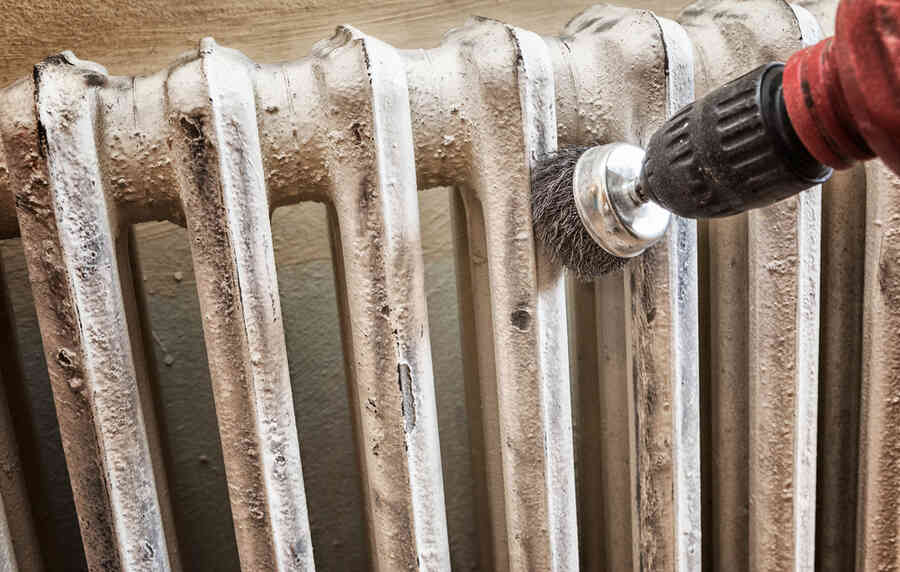
Painting your radiators can be a fun and rewarding DIY project that adds a fresh new look to your home. With the right materials and techniques, you can transform your radiators into stylish accents that complement your interior decor. Follow this step-by-step guide to achieve professional-looking results:
Gather Materials and Prepare the Area
Before you begin, make sure you have all the necessary materials and tools:
- Dust sheets or newspaper to protect the surrounding area
- Tape to cover any parts you don’t want to paint
- Sandpaper or wire wool to roughen the surface slightly
- Mild detergent and sponge for cleaning the radiator
- Primer (if required) – consult the paint manufacturer’s instructions
- Radiator paint – choose a high-quality, heat-resistant paint suitable for metal surfaces
- Paintbrush or roller – select a brush or roller size that matches the size of your radiator
- Paint tray and paint stirrer
- Clean water and a cloth for wiping any spills
Remove and Clean the Radiator
If possible, it’s best to remove the radiator from the wall for easier access and a more even finish. However, if removing the radiator is not an option, protect the surrounding area with dust sheets or newspaper.
Use a mild detergent and sponge to clean the radiator surface thoroughly. Remove any dirt, dust, or grease that may affect paint adhesion. Allow the radiator to dry completely before moving on to the next step.
Apply Primer (If Required)
Priming the radiator is essential to ensure proper paint adhesion and a longer-lasting finish. Check the instructions provided by the paint manufacturer to determine if a primer is necessary.
If a primer is required, apply it according to the manufacturer’s instructions. Allow the primer to dry completely before proceeding to the next step.
Apply the Radiator Paint
Now it’s time to apply the radiator paint. Follow these steps for a smooth and even finish:
- Stir the paint thoroughly with a paint stirrer to ensure an even consistency.
- Dip the paintbrush or roller into the paint tray, removing any excess paint.
- Starting from the top, apply the paint to the radiator using long, even strokes. Work your way down, making sure to cover the entire surface.
- Pay special attention to any detailed areas, such as fins or grooves, using a smaller brush if needed.
- Allow the first coat of paint to dry according to the manufacturer’s instructions. Apply additional coats if necessary, following the same technique.
Allow Drying Time and Apply Additional Coats (If Needed)
Once you have applied the desired number of coats, allow the paint to dry completely. Depending on the type of paint and environmental conditions, drying times may vary. Consult the paint manufacturer’s instructions for accurate drying times.
If you notice any imperfections or uneven areas, lightly sand them with a fine-grit sandpaper before applying an additional coat of paint. This will ensure a smooth and flawless finish.
Reinstall the Radiator and Finishing Touches
If you removed the radiator from the wall, carefully reinstall it once the paint has dried completely. Make sure to follow the manufacturer’s instructions for reconnecting any valves or pipes.
Remove any tape or protective covering, and wipe away any excess paint or spills with a clean cloth dampened with water.
Step back and admire your newly painted radiator, now transformed into a stylish feature in your home!
Remember, always prioritize safety when undertaking any DIY project. Ensure proper ventilation and use protective equipment such as gloves and goggles. If you’re not confident in your DIY skills, consult a professional for assistance.
Now that you know how to paint your radiators, let your creativity run wild and give your home a fresh, vibrant look!
Tips and Tricks for Better Results
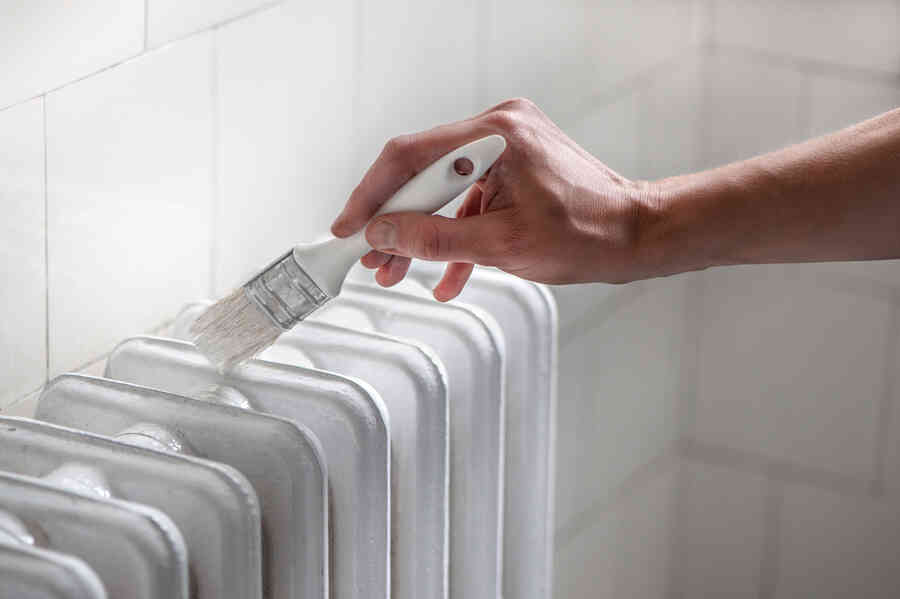
When it comes to painting radiators, following a few tips and tricks can help you achieve better results and make the process smoother. Here are some expert recommendations:
Proper Surface Preparation
Before painting, it’s essential to prepare the surface properly. This ensures better adhesion and a longer-lasting finish. Make sure to:
- Clean the radiator thoroughly using a degreaser or warm soapy water to remove any dirt, grease, or contaminants. Wipe it dry with a lint-free cloth.
- Lightly sand the surface using fine-grit sandpaper to create a slightly roughened texture. This helps the paint adhere better.
- Repair any scratches, dents, or imperfections using a suitable filler. Sand the repaired areas to ensure a smooth surface.
- Use painter’s tape to mask off any areas you don’t want to paint, such as valves or pipes.
Choosing the Right Tools
Using the right tools can greatly enhance your painting experience and result in a better finish. Consider the following:
- Use a quality synthetic brush or a mini roller designed for use with water-based paints. These tools ensure smooth application and minimize brush marks.
- If spraying the radiator instead of using a brush or roller, ensure you have a good-quality paint sprayer and follow the manufacturer’s instructions for proper usage.
- Avoid using cheap or worn-out brushes as they may leave visible streaks or bristle marks on the painted surface.
Painting Techniques for a Smooth Finish
Applying the paint correctly is crucial for achieving a smooth and professional-looking result. Here are a few techniques to keep in mind:
- Start by applying the paint in thin, even coats. This prevents drips, uneven coverage, and allows for better control.
- Always brush or roll in the same direction to maintain a consistent finish.
- Use long, smooth strokes when applying the paint, working from top to bottom for vertical radiators and in a zig-zag pattern for horizontal radiators.
- Avoid overloading the brush or roller with paint, as excess paint can create drips and uneven areas.
- If using a brush, lightly feather the edges of each stroke to blend them together and avoid visible brush marks.
Dealing with Common Issues
During the painting process, you may encounter some common issues. Here’s how to handle them:
- If you notice the paint is bubbling or blistering on the surface, stop painting immediately. This may indicate underlying moisture or heat problems. Consult a professional to address the cause and rectify it before proceeding with painting.
- If you accidentally apply too much paint, causing drips or pooling, gently remove the excess using a brush or sponge while it’s still wet. Then, proceed with applying thin, even coats to the rest of the radiator.
- In case of paint splatters or mistakes on adjoining surfaces, such as walls or floors, wipe them off with a damp cloth or sponge immediately. If the paint dries, you may need to use a paint remover or carefully scrape it off.
By following these tips and tricks, you can ensure a successful radiator painting project and enjoy a beautiful, long-lasting finish that enhances the aesthetics of your home.
Maintaining Radiator Paint: Cleaning and Touch-Ups
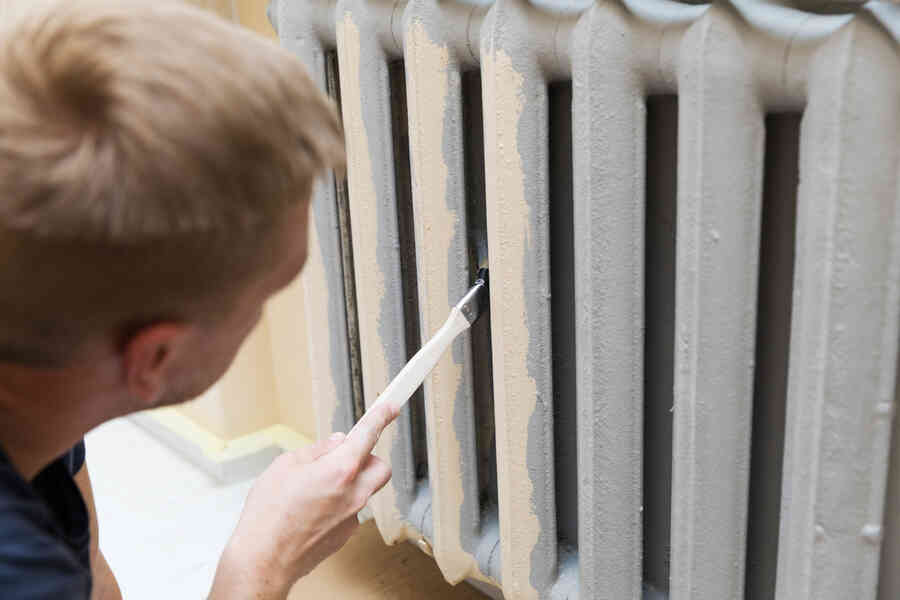
Once you’ve painted your radiators and transformed them into stylish features in your home, it’s important to know how to properly maintain the paint to ensure its long-lasting beauty. Regular cleaning and addressing any touch-ups will keep your radiators looking fresh and well-maintained. Here’s a guide on how to clean and touch-up your radiator paint:
Cleaning Painted Radiators
Over time, dust and dirt can accumulate on your painted radiators. Regular cleaning not only keeps them looking their best, but it also helps them function optimally by allowing heat to radiate more efficiently. Follow these steps to clean your painted radiators:
- Dust the radiator using a soft, lint-free cloth, microfiber cloth, or a feather duster. Start at the top and work your way down, ensuring you reach all the nooks and crannies.
- If there are stubborn stains or marks, you can use a mild solution of warm water and a gentle detergent to gently clean the affected areas. Be sure to test the solution on a small, inconspicuous area first to ensure it does not damage the paint.
- Avoid using abrasive cleaning tools or harsh chemicals, as they can damage the paint and finish of your radiators.
- After cleaning, wipe the radiator dry with a clean, dry cloth to prevent water spots or streaks.
How to Handle Scratches and Flaws
Every now and then, you may notice small scratches or flaws in your radiator paint. Fortunately, these can be easily fixed with touch-ups. Follow these steps to address minor imperfections:
- Start by cleaning the affected area using the cleaning steps mentioned above. This ensures that you have a clean surface to work with.
- Use a small paintbrush or a fine-tip paint pen that matches the color of your radiator paint. Carefully apply paint to the scratched or flawed area, ensuring you blend it seamlessly with the surrounding paint.
- Allow the touch-up paint to dry completely. This may take a few hours, depending on the type of paint used.
- If necessary, apply a second coat of touch-up paint to achieve a more even finish. Be sure to allow drying time between coats.
By regularly cleaning your radiators and addressing any minor flaws or scratches with touch-ups, you can ensure that your radiator paint remains pristine and continues to enhance the aesthetic appeal of your space.
Conclusion
After exploring the world of radiator paint, it is clear that a fresh coat of paint can do wonders for transforming the look and efficiency of your home’s radiators. By carefully considering factors such as colour and finish, heat resistance, durability, and ease of application, you can find the perfect radiator paint that suits your needs.
There are various types of radiator paints available, including water-based paints, heat-resistant options, metallic finishes, and even convenient spray paints. Our top picks for the best radiator paints on the market include Farrow & Ball Estate Eggshell, Dulux Quick Dry Satinwood, Craig & Rose Artisan Metallic Effect, Rust-Oleum Heat Resistant Paint, Hammerite Radiator Enamel Spray Paint, and Annie Sloan Chalk Paint.
When it comes to painting your radiators, following a step-by-step guide will ensure a successful outcome. From preparing the area to applying the paint and allowing adequate drying time, each stage is vital for achieving a professional finish. Remember to keep some additional paint for touch-ups and maintenance in the future.
By maintaining your radiator paint through regular cleaning and addressing any scratches or flaws promptly, you can enjoy long-lasting results. Prioritising proper surface preparation, using the right tools, and honing your painting techniques will also contribute to a flawless finish.
With the best radiator paint in hand and the knowledge of how to use it effectively, you can give your radiators a fresh lease of life while adding a touch of style to your home.
